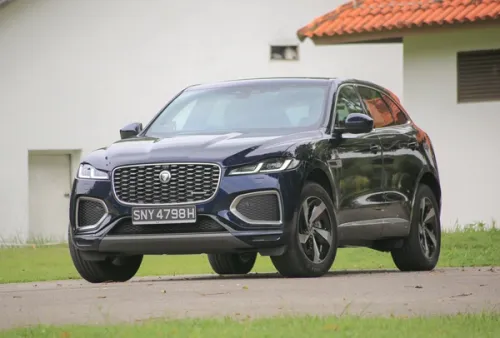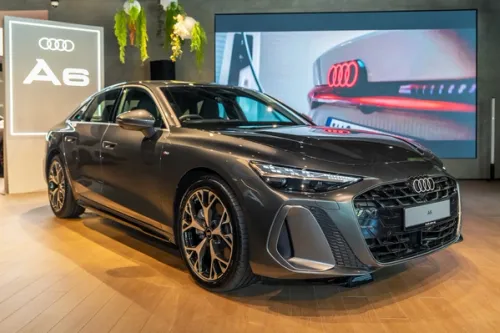Visiting the BYD History Museum: The Electric Dream spanned Generations
A visit to the BYD History Museum revealed its headstrong push to succeed brought it to where it is today.







BYD is a relatively young company amongst automotive manufacturers. It started life in 1994, at a time when electric vehicles were hardly the focus of the car world. It became more famous globally when Warren Buffett, one of the most successful investors of all time, took a 10% stake in the company in 2008. Fast forward to today and it’s remarkable to see how much the company has grown, but it is the result of a lot of trial and error, hard work and determination.

We got the chance to check out BYD’s history in-depth at its newly-built museum, which consists of two 8-storey buildings with a massive area of 9,500 square metres. You can easily spend hours there and it’ll be well worth your time, as in my humble opinion it is a world-class facility that rivals the ones I have visited in Europe.

Since there is a huge amount of content, I am not going to pore through every detail, but will just focus on my key takeaways. Let’s dive in!
BYD took great care of its staff

Besides the usual training and development, BYD had sports and cultural activities at its campuses. It also provided a medical fund, subsidised housing and schooling for BYD staff. The latter two being located within the BYD premises ensured that staff didn’t need to travel far.
BYD’s original offices are still intact

Stepping into the period correct offices felt like entering a time capsule. There were Communist flags on the tables, dusty cabinets of files neatly packed together, as well as retro seats and boardrooms.
Filing patents is in BYD’s DNA

BYD developed a wide range of products, ranging from precision analytical instruments (atomic emission spectroscopy…!) and cutting machines to batteries. They believe in finding their own solutions in an efficient, quoting one example where BYD managed to switch from manual to automated production within mere days, on request from a customer.
You can try your hand at making your own batteries

There was a station where visitors could make their own batteries. We could take home our own creations!
BYD’s battery tech started from consumer products like mobile phones

In the early 2000s, BYD started to make mobile phone batteries for western brands like Motorola (remember the Razr?). Their pioneered the ‘winding’ method which became the mainstream way for mobile phone batteries to be made. They went on to make batteries for products such as laptops, earphones, power banks and drones.
Seeing the Blade battery in person is riveting

We often see it on presentation slides and hear about it often, but to see the Blade battery in person is very cool. Laid in thin strips very closely packed together, the Blade battery maximises energy density, cooling and toughness.
BYD’s first self-designed cars were panned by its own dealers

BYD officially entered the car industry by acquiring Qinchuan Auto on January 2003. It then showed its first self-designed model, the 316, at a national dealer conference in 2004 - to very negative reviews.

Its F3 however, ushered in an era of acceptance.
Some of BYD prototypes look like Mercedes and Toyota vehicles

The BYD ET looks suspiciously inspired by an A-Class, while the F3 looks like a Toyota Corolla.

But some of these links were actually official, when BYD actually had a joint venture with Mercedes, through Denza.
BYD is not just doing cars - but almost everything else on wheels

As early as 2015, BYD pledged to conquer all types of vehicles, including buses, taxis, coaches, logistics, construction, sanitisation and passenger. They also focused on specific use cases like transport for warehouses, mining, airports and ports. All this is part of their “7+4” strategy.
The e6 popularised EV motoring as taxis throughout the world

Remember the e6 taxis running about Singapore in great numbers? Turns out we were not the only ones. The e6 is BYD’s first mass-produced EV and were popularly used as taxis across the world.
Expect 2,100 km of range from BYD’s next-gen PHEVs

While we are fawning over a 1,300 km or so range figure in Singapore’s first PHEVs from China, BYD is already set to hit more than 2,000 km of range with its DM 5.0 plug-in hybrids. With an engine thermal efficiency of 46.06% (the highest of any mass produced engine), we can’t wait to see the DM 5.0 in Singapore.
BYD’s vertical integration is spell-binding

BYD filled an entire room with spare parts, and then stated that it builds every single one of them. It sure made an impact indeed!
Multi-generational parts showed BYD’s progress with every step

Different generations of parts were also shown to see how BYD innovated through the years. It’s remarkable to see how things like chips shrunk in size over the years.
The U9’s carbon fibre monocoque body is a sight to behold

It’s a little known fact that the YangWang U9 has a carbon fibre monocoque body - just like a McLaren. Seeing the naked body was awesome. How did China progress so quickly?
BYD made watches

Demonstrating how keys change over generations, one curious key was actually a smart watch made by BYD that could lock and unlock the car. Pretty neat!
Photos by James Wong
---
Car you sell, Carousell. Get the highest quote for your car in just 24 hours, with assistance on paperwork too.


Get the Best Price for your used car
from 500+ dealers in 24 hours

- Convenient and Hassle-Free
- Consumer Protection
Transparent Process
With No Obligation













